By applying skincare products in the right order, you can increase the amount of active substances that your skin absorbs and increase the likelihood that your products will work.
Layer your products from thinnest to thickest consistency as a general rule of thumb to make sure that lighter formulas soak first, then richer and thicker products. According to board-certified dermatologist and CEO of Cosmetic Laser Dermatology Mitchel P. Goldman, MD, this helps prevent occlusion, which occurs when heavier cosmetics create a barrier that prevents substances from getting into your skin, and it also promotes greater product absorption, as Health reported. Although occlusive lotions keep out active elements you wish to absorb, they seal in the skin to trap hydration.
A complicated 10-step skincare program isn’t necessary. Cleanser, moisturizer, and SPF are the three components of the most basic skincare regimen. In addition to keeping your skin hydrated, clean, and sun-protected, using fewer products can lower your chance of irritation and adverse reactions. Here’s the ideal sequence to apply all of the products if you want to add more to your routine to address specific skin conditions.
Table of Contents
How to Perform Skincare Steps
Achieving radiant, healthy skin involves more than just using skincare products—it’s about using them in the right order. Learn the essential steps and sequence for applying skincare products to maximize their effectiveness and unveil your best skin yet.
First Step: Cleanser

Always start your skincare routine by washing your face. Cleaning removes any debris, oil, and grime that may have built up in and around your pores and leaves your skin clear for products to absorb.
Select a cleanser that is mild, devoid of alcohol, and non-abrasive. These cleansers won’t excessively remove the skin oils that support a healthy skin barrier. Different skin types, however, could need additional substances that are moisturizing or reduce oil.
Important components: To hydrate and moisturize dry skin, use a cleanser containing ceramides, glycerin, hyaluronic acid, or aloe vera. In addition, Goldman suggests searching for chamomile, green tea extract, or niacinamide to calm skin without over-hydrating or stripping it. Additional components that can help manage excess oil, clear clogged pores, and lessen acne outbreaks include benzoyl peroxide, glycolic acid, salicylic acid, and tea tree oil.
Applying the cleanser: Wet your face with lukewarm water, then use your hands to gently massage the cleanser into your skin. Use a towel to pat dry. After you’ve sweated a lot, wash your face both in the morning and at night.
Step 2: Toner
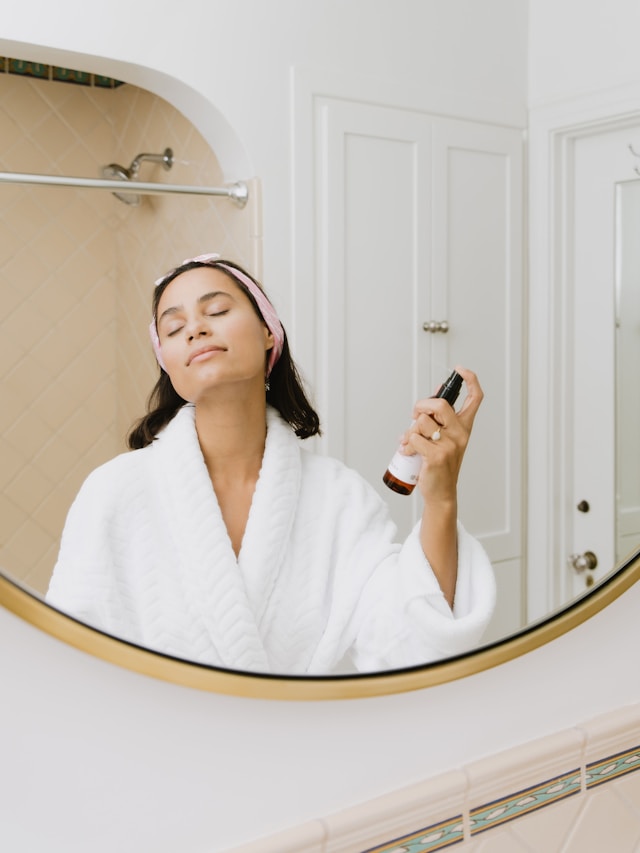
While they’re not always required, toners can give your skincare routine some extra punch. After cleansing, toners can help remove extra oil and debris, better preparing your skin for subsequent treatments. Toners can also help prevent acne by promoting a healthy skin pH and hydrating dry skin.
Important components: If you have dry or sensitive skin, go for rose water toners or moisturizing hyaluronic acid, according to Goldman. Salicylic acid or witch hazel are examples of astringent toners, which eliminate excess oil, and are suitable for oily and acne-prone skin types.
How to use it: Gently pat the product over your face after soaking a cotton pad or ball in toner.
Step 3: Spot Treatment

Spot treatments should be used immediately following cleaning or toning if you’re hoping to instantly clear up a zit or lighten dark areas. Depending on what you’re treating, these products contain different active substances and target small areas of skin. Maximize the amount of active ingredients that penetrate your skin by directly applying spot treatments to your freshly prepped skin.
Important components: “Search for spot treatments with ingredients like kojic acid or hydroquinone for dark spots, and benzoyl peroxide and salicylic acid for acne.” These components successfully address particular issues,” Goldman stated.
How to use it: Using clean fingertips, apply a little amount of spot therapy to the afflicted area after cleaning and toning. Utilize these products as needed, but be sure to adhere to any application guidelines provided by the product maker. Avoid applying other serums or treatments to regions that have had spot therapy if you are using them right after.
Step 4: Serums
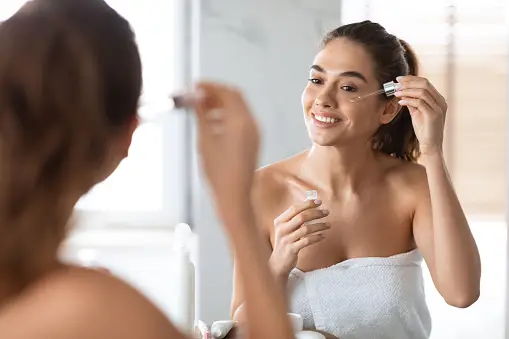
After using a cleanser or toner, serums should be applied straight to the skin’s surface because they absorb swiftly. Skincare experts generally refer to solutions with a high concentration of an active component as serums.
According to Goldman, in order to better penetrate the skin and enhance hydration, brightness, or other targeting specific skin conditions, these treatments are usually water-based and lightweight. Hydrating, anti-aging, vitamin C, and niacinamide serums are popular types of serums.
Important components: Vitamin C reduces hyperpigmentation, softens wrinkles, and brightens skin. Niacimide helps brighten skin, minimize pores, lessen acne, smooth fine wrinkles, and manage oil production. Hydrating and retaining moisture is aided by peptides, ceramides, vitamin E, hyaluronic acid, and glycerin. Glycolic acid and lactic acid are two examples of alpha hydroxy acids (AHAs) that help moisturize, exfoliate, and smooth fine wrinkles in the skin. Salicylic and azelaic acid-containing serums can improve acne by unclogging pores and lowering inflammation.
How to use it: Using clean fingertips, apply a pea-sized amount—or the amount advised by the product manufacturer—on your face. Next, use a light tapping motion to gently massage the product into your face and neck.
Step 5: Retinol and Other Retinoid Treatments

Since serums are frequently thicker and more occlusive, retinoid therapies like as retinol should be used after them. You can make sure that the active elements in the serum have already absorbed into the skin by applying the retinol cream after the serum. According to Goldman, this maximizes the effects of retinol by enabling it to penetrate deeper layers of the skin.
Retinol, which is a form of retinoid strictly speaking, and other retinoids are vitamin A derivatives that aid in collagen creation, cell turnover, and general skin texture improvement to help with acne and anti-aging.
Important components: Due to their decreased potency compared to other retinoids, retinol, retinyl palmitate, and retinaldehyde are over-the-counter (OTC) and suitable for those with sensitive skin, few wrinkles, mild acne, uneven skin tone, and hyperpigmentation.
Dermatologists recommend retinoid medications such as Aklief (trifarotene), Tazorac (tazarotene), Differin (adapalene), and Retin-A (tretinoin) to treat more severe acne and minimize wrinkles.Adapalene, often known as OTC Differin, is FDA-approved for the treatment of acne.
How to use it: Start modestly until your skin adjusts, applying a pea-sized amount of retinol or retinoid treatment every other night. Use retinoids and retinol only at night because they make the skin extremely sensitive to sunlight.
Step 6: Eye Cream
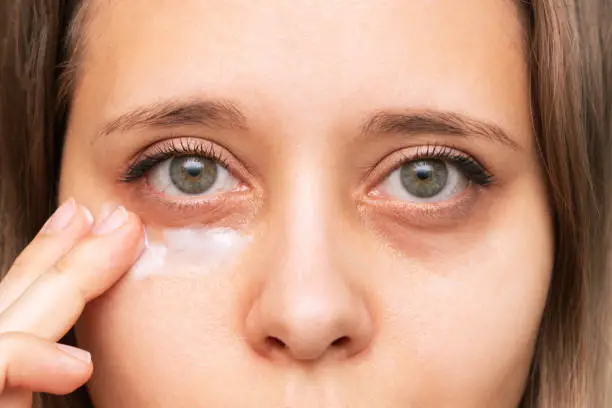
Because eye creams are thick, you should apply them after any treatments to aid in better absorption. Although an eye cream is not necessary, it can help hydrate and moisturize the sensitive skin around your eyes, which is prone to wrinkles and sun damage.
Important components: “For day creams, look for ingredients like peptides, antioxidants (such as vitamin C or green tea extract), and SPF to protect against sun damage,” Goldman advised. “Night creams can benefit from ingredients like retinol, niacinamide, or hyaluronic acid to promote repair and hydration.”
How to use it: After applying your retinol or serum, use your ring finger to dab some eye cream on your undereye area. It is important to treat this sensitive skin gently; avoid pulling or rubbing it.
Step 7: Moisturizer

Typically heavier in substance, moisturizers are best applied following lighter-weight serums or treatments. After cleansing, use a moisturizer if you’re following the bare minimum skincare regimen. In addition to sealing your skin and helping to restore your skin barrier, moisturizers can also stop thinner goods from completely penetrating your skin.
Important components: “People with dry skin should look for moisturizers with ingredients like ceramides, glycerin, or shea butter for intense hydration,” Goldman stated. “Oily or acne-prone skin types can benefit from oil-free, non-comedogenic moisturizers with ingredients such as hyaluronic acid or lightweight gel formulations.”
How to use it: If you did not use an eye cream, gently massage your moisturizer over your entire face and neck, including the area beneath your eyes.
Step 8: Face Oils
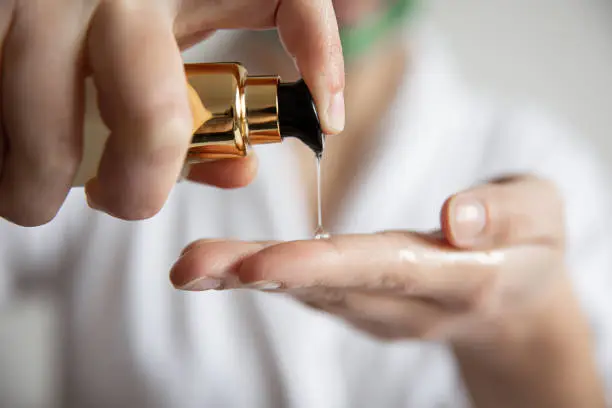
Your skin receives extra moisture and hydration from face oils. Applying face oils should always come after using a moisturizer. “This is because face oils are typically thicker and heavier than moisturizers and can create a barrier that prevents the moisturizer from fully penetrating the skin,” Goldman stated.
Important components: According to Goldman, face oils rich in fatty acids, such as avocado, coconut, or argan oil, can aid in hydrating and nourishing skin. He also suggests lighter oils such as jojoba and grapeseed to control oil, and chamomile and rosehip for sensitive skin.
Applying: After moisturizing, add a few drops of facial oil on your fingers. Alternatively, you can dab oil straight onto your cheekbones and forehead. After that, gently massage the oil into your neck and face skin.
Step 9: Sunscreen
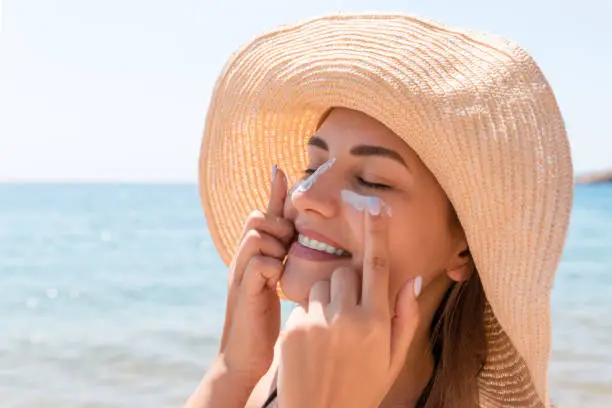
You don’t need sunscreen only at the beach. The last step in your daytime skincare routine should always include sunscreen. Regular use aids in shielding your skin from UV radiation, which can lead to skin cancer and premature aging symptoms including wrinkles and sun spots.
The American Academy of Dermatology advises using sunscreen with at least a 30 sun protection factor (SPF) and broad-spectrum protection. According to Goldman, you can also use SPF-containing moisturizers and makeup, although these might not provide adequate protection from prolonged sun exposure.
How to: Gently cover your ears, neck, face, and chest with sunscreen. The recommended dosage of sunscreen to apply is two milligrams per square centimeter of skin, or about the size of a nickel. Mineral sunscreens start to work right away, but chemical sunscreens take around 15 minutes to absorb. You should reapply for both every two hours.
Reasons Order Is Important
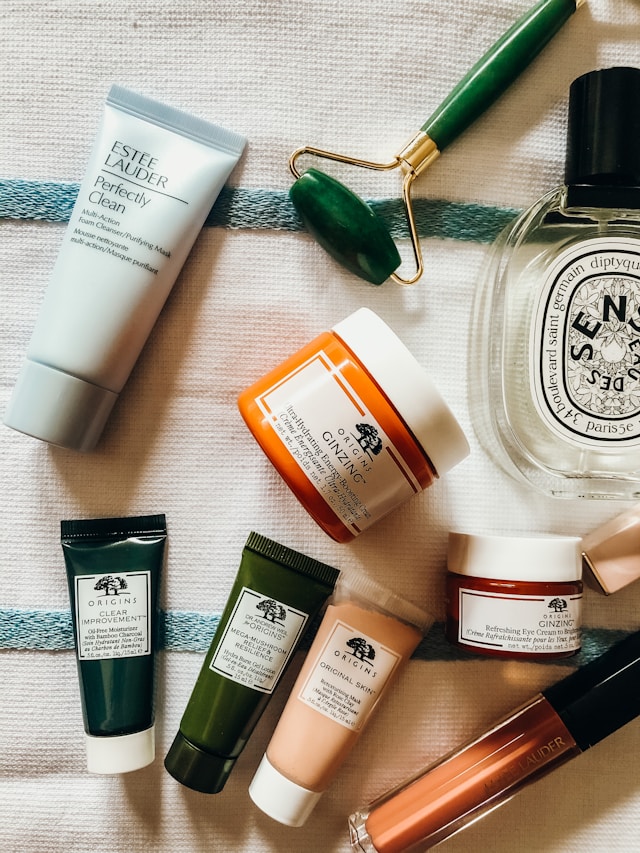
According to Goldman, pH, consistency, and absorption are the key factors influencing the order of skincare products.
Your skin can only absorb so much product at a time, and if you apply skincare products in the wrong order, your skin will absorb even less active components. Similarly, putting thicker products (like serums) on top of thinner ones (like moisturizers) stops the active ingredients from being absorbed.
For your skincare products to function, layering skincare correctly also helps your skin maintain its pH balance. “Some products, such as chemical exfoliants or pH-dependent actives, require a specific pH range to function optimally,” Goldman stated.
A Synopsis
The optimal performance of your costly products and essential treatments is ensured when you layer your skincare regimen in the proper order. To ensure that all of your skincare products absorb, it’s a good idea to apply them in the thickest to thinnest consistency order.
Your skincare regimen should at the very least consist of cleansing, moisturizing, and sunscreen. For extra assistance in treating fine lines, acne, or other skin issues, use retinol, serum, and spot therapy.
If you need assistance determining which active components and products are best for your skin type, speak with your dermatologist.
